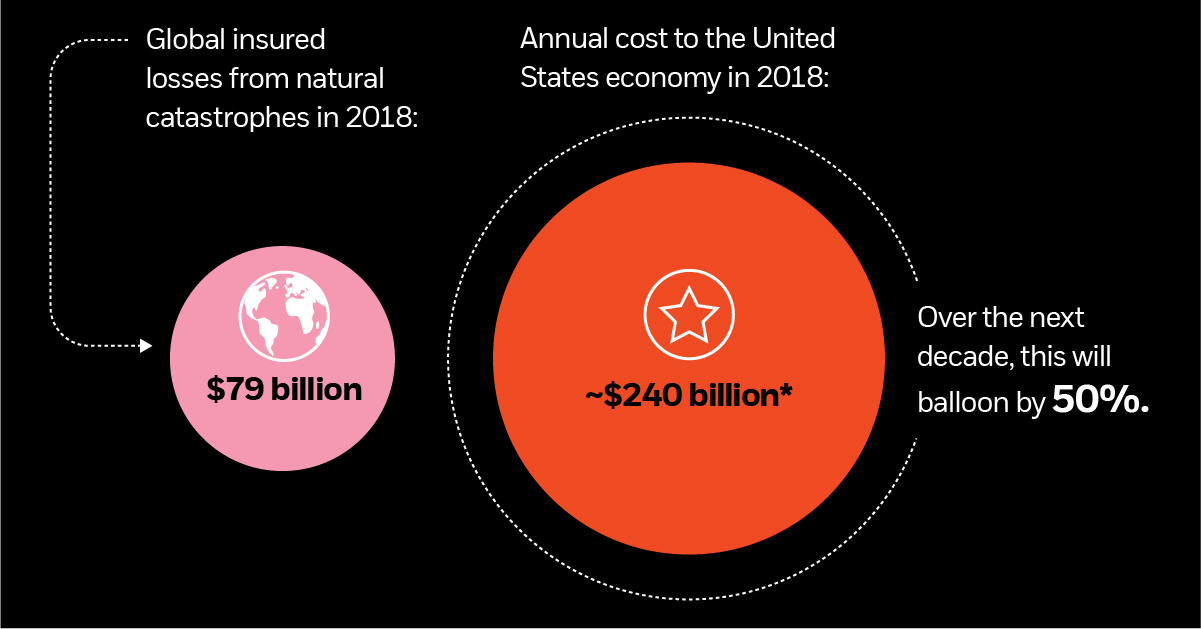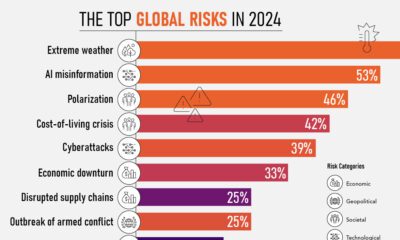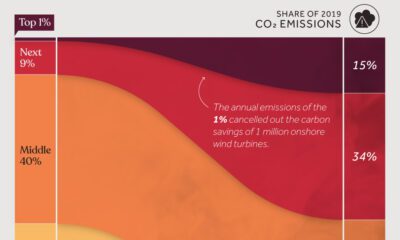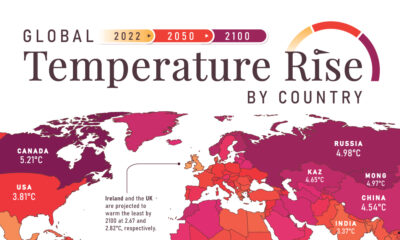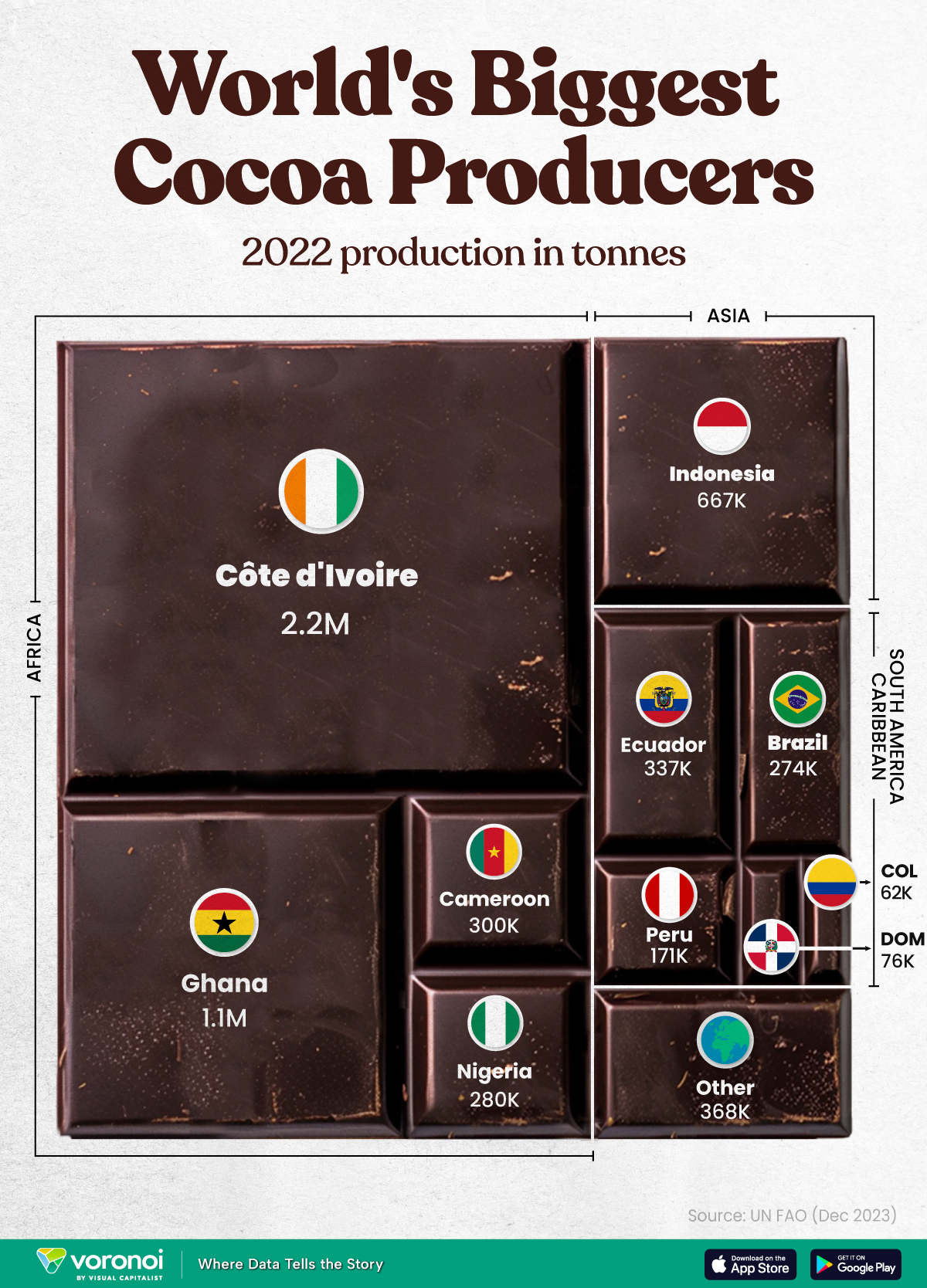Agriculture
An Investing Megatrend: How Climate Change and Resource Scarcity are Shaping the Future
If you’ve ever played with dominos, you’re familiar with their cascading effects. Gently nudge one piece, and the force will ripple throughout the rest.
This process of cause and effect works much the same way in society and business: as global forces take hold, their effects are deeply intertwined with the financial markets.
The Climate Megatrend
Today’s infographic comes from BlackRock, and it explains how one such megatrend, climate change and resource scarcity, will be a long-term opportunity for investors.

Earth in the Hot Seat
In 2018, global CO2 emissions rose 1.7% to the highest level since 2013. These rising emissions have intensified the effects of climate change, with 2015-2018 being the four hottest years ever recorded. Society and the economy are starting to feel its negative consequences:
- Extreme weather events have become more frequent. In particular, floods and other hydrological events have quadrupled since 1980.
- In hotter, wetter conditions, infectious diseases spread more easily—between 2004-2017, total tick-borne illnesses increased by 163%.
- The global insured losses from natural catastrophes was $79 billion in 2018.
- Extreme weather effects, and the health impact of burning fossil fuels, cost the U.S. economy at least $240 billion in 2018.
It’s clear that climate change is having an immediate, serious impact on the world.
Many see climate change as a long-dated future risk, however, our research findings show that compared to the 1980’s, there are measurable GDP impacts in the market today
-Brian Deese, Global Head of Sustainable Investing at BlackRock
In addition to these issues, climate change is contributing to another problem: it’s becoming harder to feed the global population.
Over 7 Billion Mouths to Feed
Climate change significantly threatens global food security. As glaciers melt, the world’s freshwater supply—including what’s available for food production—melts with it. This is a significant problem, considering that between 2,000-5,000 liters of fresh water are needed to produce one person’s daily food intake.
As an added hurdle to food production, supply and demand are pulling in opposite directions.
The share of total employment in agriculture has dropped significantly over time. Even worse, among the food that is able to be harvested, roughly 30% is lost or wasted globally.
On top of limited resources, the world will have to contend with forces driving up food demand.
- Population growth: By 2050, the global population will grow by about two billion.
- More calorie-rich diets: As emerging economies grow their wealth, their populations seek richer foods like meat and dairy products.
How can society combat these pressing issues?
A Greener, More Plentiful Future
As society works to slow climate change and produce more with less, a myriad of investment opportunities will emerge.
- Renewable energies are becoming increasingly competitive.
- Electric & fuel cell vehicles are growing in market share.
- Products made from recycled materials are appealing to environmentally-conscious consumers.
- Agricultural machinery counters the declining workforce and increases productivity.
- Precision agriculture leverages real-time environmental data to help farmers make decisions.
Climate change and resource scarcity will be a driving force behind the actions of consumers, companies, and governments for years to come.
By staying attuned to this megatrend, investors will be able to spot long-term opportunities.
Markets
The World’s Top Cocoa Producing Countries
Here are the largest cocoa producing countries globally—from Côte d’Ivoire to Brazil—as cocoa prices hit record highs.
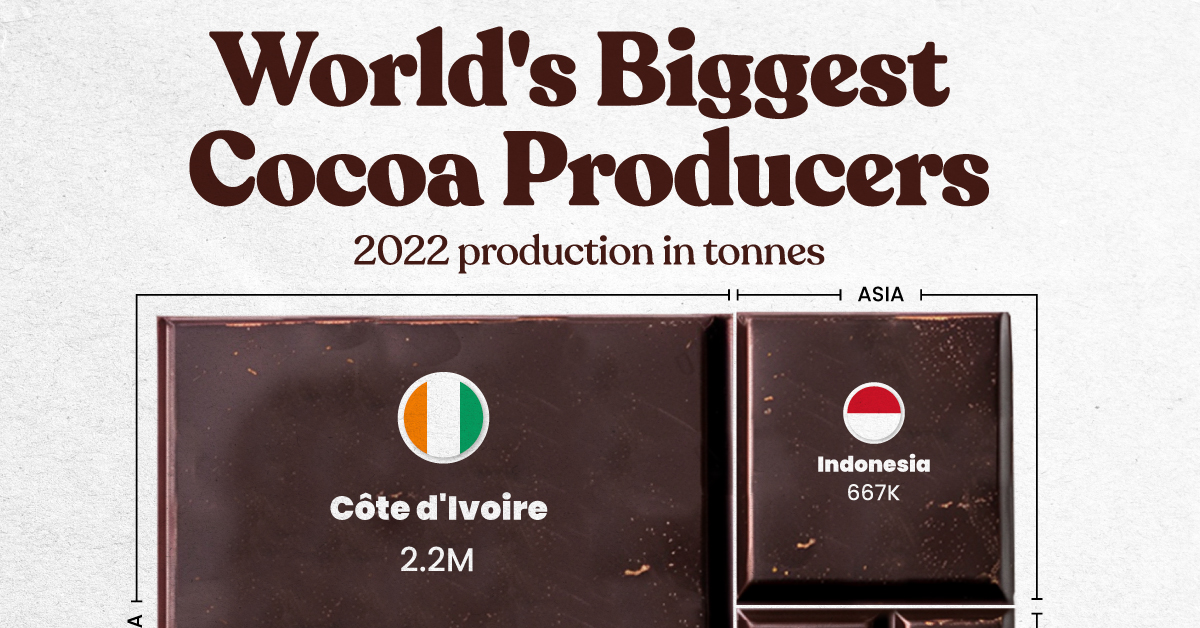
The World’s Top Cocoa Producing Countries
This was originally posted on our Voronoi app. Download the app for free on iOS or Android and discover incredible data-driven charts from a variety of trusted sources.
West Africa is home to the largest cocoa producing countries worldwide, with 3.9 million tonnes of production in 2022.
In fact, there are about one million farmers in Côte d’Ivoire supplying cocoa to key customers such as Nestlé, Mars, and Hershey. But the massive influence of this industry has led to significant forest loss to plant cocoa trees.
This graphic shows the leading producers of cocoa, based on data from the UN FAO.
Global Hotspots for Cocoa Production
Below, we break down the top cocoa producing countries as of 2022:
| Country | 2022 Production, Tonnes |
|---|---|
| 🇨🇮 Côte d'Ivoire | 2.2M |
| 🇬🇭 Ghana | 1.1M |
| 🇮🇩 Indonesia | 667K |
| 🇪🇨 Ecuador | 337K |
| 🇨🇲 Cameroon | 300K |
| 🇳🇬 Nigeria | 280K |
| 🇧🇷 Brazil | 274K |
| 🇵🇪 Peru | 171K |
| 🇩🇴 Dominican Republic | 76K |
| 🌍 Other | 386K |
With 2.2 million tonnes of cocoa in 2022, Côte d’Ivoire is the world’s largest producer, accounting for a third of the global total.
For many reasons, the cocoa trade in Côte d’Ivoire and Western Africa has been controversial. Often, farmers make about 5% of the retail price of a chocolate bar, and earn $1.20 each day. Adding to this, roughly a third of cocoa farms operate on forests that are meant to be protected.
As the third largest producer, Indonesia produced 667,000 tonnes of cocoa with the U.S., Malaysia, and Singapore as major importers. Overall, small-scale farmers produce 95% of cocoa in the country, but face several challenges such as low pay and unwanted impacts from climate change. Alongside aging trees in the country, these setbacks have led productivity to decline.
In South America, major producers include Ecuador and Brazil. In the early 1900s, Ecuador was the world’s largest cocoa producing country, however shifts in the global marketplace and crop disease led its position to fall. Today, the country is most known for its high-grade single-origin chocolate, with farms seen across the Amazon rainforest.
Altogether, global cocoa production reached 6.5 million tonnes, supported by strong demand. On average, the market has grown 3% annually over the last several decades.
-

 Markets1 week ago
Markets1 week agoU.S. Debt Interest Payments Reach $1 Trillion
-

 Business2 weeks ago
Business2 weeks agoCharted: Big Four Market Share by S&P 500 Audits
-

 Real Estate2 weeks ago
Real Estate2 weeks agoRanked: The Most Valuable Housing Markets in America
-

 Money2 weeks ago
Money2 weeks agoWhich States Have the Highest Minimum Wage in America?
-

 AI2 weeks ago
AI2 weeks agoRanked: Semiconductor Companies by Industry Revenue Share
-

 Markets2 weeks ago
Markets2 weeks agoRanked: The World’s Top Flight Routes, by Revenue
-

 Demographics2 weeks ago
Demographics2 weeks agoPopulation Projections: The World’s 6 Largest Countries in 2075
-

 Markets2 weeks ago
Markets2 weeks agoThe Top 10 States by Real GDP Growth in 2023

